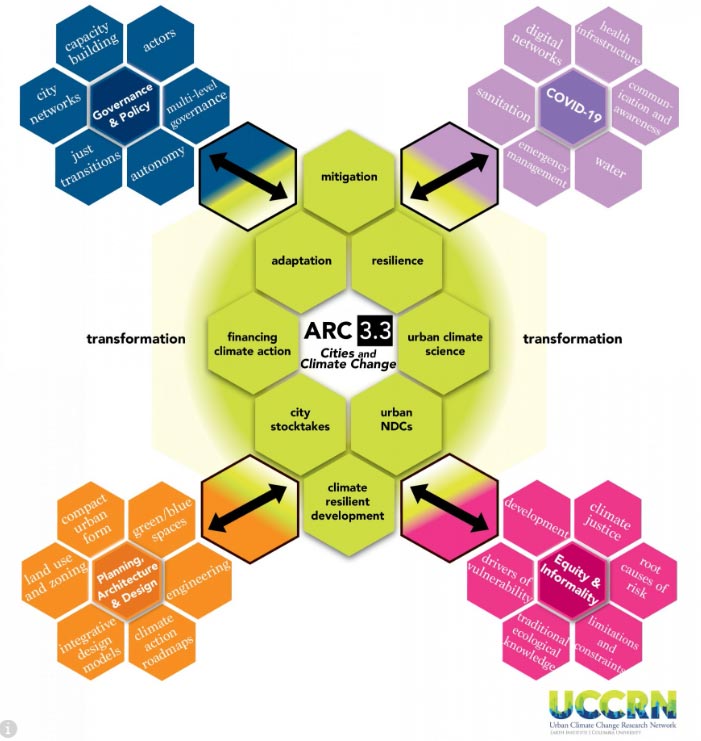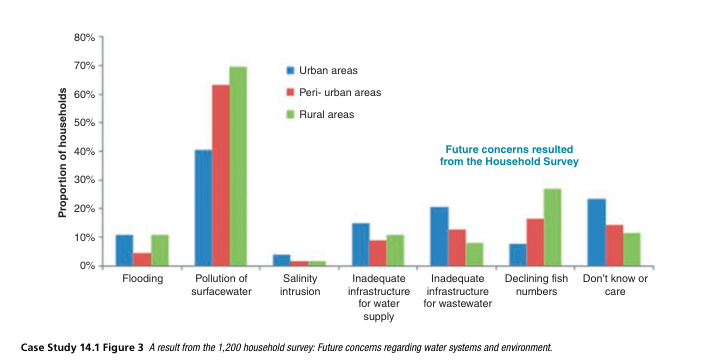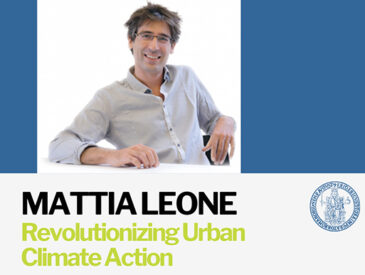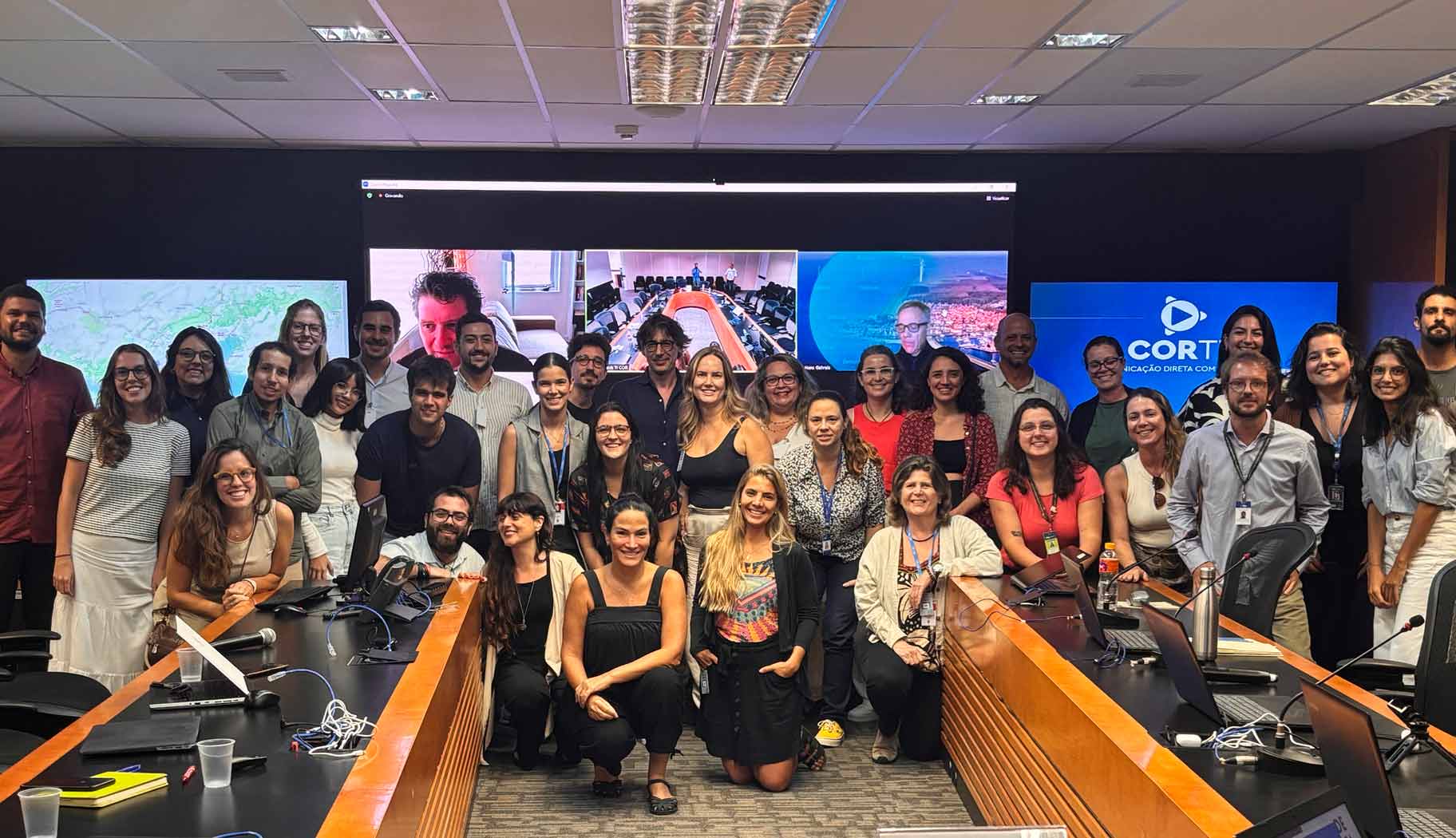Cities might benefit from low-carbon energy production and improved health with wastewater treatment. Investment strategies should include the application of life cycle analysis to water supply, treatment, and drainage; use of anaerobic reactors to improve the balance between energy conservation and wastewater treatment; elimination of high-energy options, such as interbasin transfers of water, wherever alternative sources are available; and the recovery of biogas produced by wastewater.

List of Contents
- 1 What is stormwater management?
- 2 Mitigation Strategies for Urban Water Systems
- 3 Discover ARC3.3
- 4 Climate Adaptation through Sustainable Urban Water Development in Can Thao City (Vietnam)
- 5 New Citizen Roles in Climate Change Adaptation: The Efforts of the Middle-Sized Danish City of Middelfart
- 6 References
- 6.1 Coordinating Lead Authors
- 6.2 Lead Authors
- 6.3 Contributing Authors
- 6.4 What is stormwater management?
- 6.5 Mitigation Strategies for Urban Water Systems
- 6.6 Climate Adaptation through Sustainable Urban Water Development in Can Thao City (Vietnam)
- 6.7 New Citizen Roles in Climate Change Adaptation: The Efforts of the Middle-Sized Danish City of Middelfart
Key points
- Integrated Water Management: focus on sustainable practices like life cycle analysis, anaerobic reactors, and biogas recovery to improve energy efficiency and wastewater treatment.
- Stormwater Management: essential for climate resilience, using combined or separate sewer systems to handle increased precipitation and prevent sewage discharge during heavy rains.
- Can Tho City Case Study: applied sustainable water management to improve infrastructure and resilience, addressing fragmented services and climate impacts using Integrated Urban Water Management (IUWM) principles.
- Middelfart Case Study: new citizen roles in Climate Change Adaptation.
What is stormwater management?
Stormwater management is now acknowledged as a critical component of “climate smart” urban infrastructure (Gill et al.,2007). Many cities are seeing trends of increased annual precipitation, as well as heavy rains falling in short time frames during storm events, which lead to water runoff and flooding. In mature cities, this is managed in two forms: combined sewer systems and municipal separate storm sewer systems (MS4). Combined sewer systems are designed to collect rainwater runoff, domestic sewage, and industrial wastewater in the same pipe and deliver it to treatment plants. During heavy precipitation events, the capacity of combined sewers can be exceeded, leading to discharges of untreated wastewater directly to nearby water bodies. In MS4 systems, stormwater and wastewater are managed separately. Therefore, during intense precipitation events, stormwater can be discharged, but not sewage.
Mitigation Strategies for Urban Water Systems
Many cities are faced with significant needs in terms of rehabilitating and modernizing their UWS because many of their components have reached the end of their useful life. This lack of adequate infrastructure is an opportunity to build treatment technologies that take into account an efficient use of energy. UWS produce harmful GHGs in two ways. First, water systems are generally energy intensive, especially at the stage of pumping stations and wastewater treatment, where there are the most opportunities to reduce CO2 emissions. For example, Friedrich et al. (2009) carried out a life cycle assessment of the urban water cycle for the Durban municipality in South Africa and found that, among the individual processes involved in the provision of water and wastewater, treatment of wastewater with activated sludge technology produced the highest emissions (41% of the total from the UWS) due to its high energy consumption; the distribution of potable water came in second place (18%). A second source of emissions comes from off-gassing from the wastewater itself (e.g., methane emissions from biological waste). New infrastructure investments into water systems can be optimized by identifying potential adaptation and mitigation benefits. There is a growing range of options available to reduce emissions associated with water and wastewater management. For example, biogas recovery for electricity production is a mitigation measure that may be applied in conventional municipal wastewater treatment plants (i.e., activated sludge–sewage that is aerated and broken down by micro-organisms).
This approach not only reduces the emission of methane, but also helps substitute the draw-down of electricity from the grid.

Discover ARC3.3
UCCRN edu is proud of its active participation in the development and dissemination of innovative content for ARC3.3, a publication by Cambridge University Press. Discover the new ARC3.3 release!
Climate Adaptation through Sustainable Urban Water Development in Can Thao City (Vietnam)
The Climate Adaptation through Sustainable Urban Development Project was a research initiative aimed at bringing sustainable principles into practice as an effective means of adapting to climate change. The project demonstrated a sustainable development framework to improve the planning of urban water services to enhance the resilience to climate change of local communities and the government of Can Tho City of Vietnam, as a case study. The project was undertaken in collaboration by CSIRO Australia, Can Tho University, and Can Tho Climate Change Coordination Office. The sustainability of the water systems in Can Tho City, including both its physical infrastructure and its ecology, is under pressure from rapid urbanization and industrialization. Results from the project’s large survey of 1,200 households and a comprehensive sector review (Neumann et al., 2011, 2013) indicated that water service provisions were greatly fragmented among urban and rural areas. Many peri-urban households draw water from multiple sources and use it for different purposes, presenting adverse implications for their health. Inadequate physical infrastructure is the main issue, resulting in limited access to clean water and sanitation, frequent urban floods, and increasing pollution in waterways, which was the utmost public concern. These issues are exacerbated by the impacts of a changing climate, such as more prolonged and frequent drought, heat waves, and inundations, which have already been experienced in recent decades. To deal with such a complex system of water and sanitation services and the environment, the research team applied the integrated urban water management (IUWM) principles (Maheepala et al., 2010). This provides state-of-the-art integrated assessment methodologies and participatory processes to assist in the strategic planning of urban water systems that are sustainable for specific conditions. IUWM aims to plan, design and manage the overall water cycle, including water supply, stormwater, and wastewater in a coordinated manner.

New Citizen Roles in Climate Change Adaptation: The Efforts of the Middle-Sized Danish City of Middelfart
Danish Citizens of Middelfart may be regarded as a valuable knowledge resource when it comes to their local area and neighborhood and as a creative resource in urban development and the making of “livable cities” and innovative partnerships. Even though citizens do not have knowledge of water systems or urban planning, they are experts in their local neighborhood and have a unique knowledge of, for example, where there are local issues with flooding and how the local area serves different recreational purposes. This is knowledge that can be used (e.g., in risk assessments and in designing new solutions that fit local needs).
The city of Middelfart, Denmark, is working with green and blue structures, aboveground SuDS, and new citizens roles through two different projects:
- the transformation of private gardens into “rain gardens:”;
- the development of a resilient urban area called Kongebro, with the aim to be Denmark’s most beautiful climate change adaptation project.
the municipality together with the Danish garden society have worked with the citizens through workshops and individual garden visits. The project is realized in collaboration with the Municipality of Middelfart, Middelfart Wastewater utility, and citizens (garden owners). The process has strengthened the already good neighborhood and also made it possible to combine some SuDS elements across garden boundaries.
References
Coordinating Lead Authors
- Sebastian Vicuña (Santiago), Mark Redwood (Ottawa)
Lead Authors
- Michael Dettinger (San Diego), Adalberto Noyola (Mexico City)
Contributing Authors
- Daniel B. Ferguson (Tucson), Leonor P. Guereca (Mexico City), Christopher M. Clark (Washington, D.C.), Nicole Lulham (Ottawa),
Priyanka Jamwal (Bangalore), Anja Wejs (Aalborg), Upmanu Lall (New York), Liqa Raschid (Colombo), Ademola Omojola (Lagos), David C. Major (New York)
What is stormwater management?
- Oberts, G. L. (2007). Influence of snowmelt dynamics on stormwater runoff quality. Watershed Protection Techniques 1, 55–61;
Mitigation Strategies for Urban Water Systems
- Lwasa, S., Mugagga, F., Wahab, B., Simon, D., Connors, J., and Griffith, C. (2014). Urban and peri-urban agriculture and forestry—Transcending poverty alleviation to climate change mitigation and adaptation. Urban Climate 7, 92–106.
Climate Adaptation through Sustainable Urban Water Development in Can Thao City (Vietnam)
- Can Tho DONRE. (2008). Report on Current Situation of Environment of Can Tho City. Department of Natural Resources and Environment, Can Tho City
- Cantho Portal. (2015). Cantho City. Accessed February 6, 2016: http://cantho.gov.vn/
- Moglia, M., Nguyen, M. N., Neumann, L. E., Cook, S., and Trung, N. H. (2013). Integrated assessment of water management strategies: The case of Can Tho City, Vietnam. The 20th International Congress on Modelling and Simulation MODSIM 2013, MSSANZ, Adelaide, November 2013.
New Citizen Roles in Climate Change Adaptation: The Efforts of the Middle-Sized Danish City of Middelfart
- Middelfart Municipality/Water Utility (n.d.). Project homepage. Accessed February 5, 2017: www.klima-byen.dk
- KlimaByen. (2015). The Climate City project – The most beautiful climate adaptation project in Denmark. Accessed February 12, 2016: http://www.klima-byen.dk





